Interview with Street Photographer Eric Kim
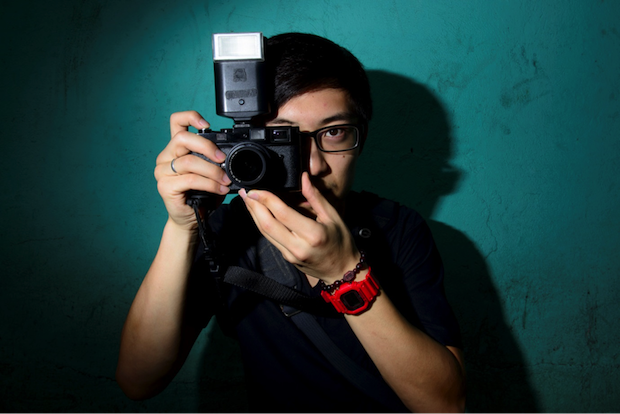
Whenever I look online for information or advice relating to street photography, Eric Kim’s name regularly surfaces. I’ve been reading his blog for a couple of years and in that time; I’ve watched his career and online prominence grow.
In comparison to other areas of photography, there’s relatively little advice online about street photography. But a number of photographers like Eric are helping to tackle this problem as well as build a solid and much-needed community for street photographers.
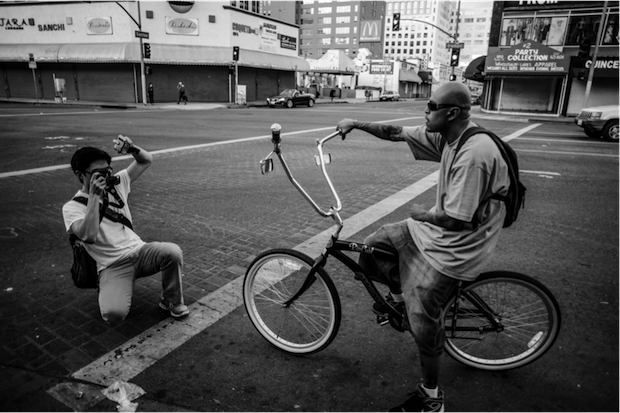
PetaPixel: Hi Eric, could you tell us a bit about yourself and what you do?
Eric Kim: Great to chat with you. To start, my name is Eric Kim and I am a street photographer currently based in Berkeley, California. I have been shooting street photography since I was 18 (I am 25 now), and started my street photography blog around 3 years ago. I first started my blog because I wanted to share some of the lessons I learned in street photography. I remember when I first started to shoot in the streets; I couldn’t find any information or resources on how to shoot street photography. So, I applied everything I learned from my personal experiments and background in Sociology at UCLA.
I currently make a living teaching street photography workshops internationally and I pour my heart and soul into serving the street photography community at large.
PP: You’re totally right, in terms of resources for street photographers there is, compared with other areas, very little. Like you said, you pour yourself into helping the community. How do you deal with the people who unjustly take issue with your blog and workshops?
EK: I think the great thing is that nowadays street photography is getting much more popular online, so there are many more resources online now. I also know many great street photographers who teach street photography workshops regularly like David Gibson, Nick Turpin, and Maciej Dakowicz which I have great feedback on. My talented street photography colleague Charlie Kirk also teaches online street photography workshops on a one-on-one basis as well and he is incredibly knowledgeable. I totally understand why people take issue with my blog and workshops. After all, I have only been shooting street photography for 7 or so years and am relatively young. I am also not the best street photographer out there and I am still personally learning a lot in my street photography journey.
However, I think there is just a misunderstanding online. My blog isn’t me talking from a throne, pretending like I am the best and know everything. And my workshops won’t turn you into Henri Cartier-Bresson overnight. What I do offer in my blog is my personal real life experiences in street photography: my personal difficulties, doubts, and what I have learned from the master street photographers who have come before me. I also try my best to feature some of the best contemporary street photographers all around the globe on the blog.
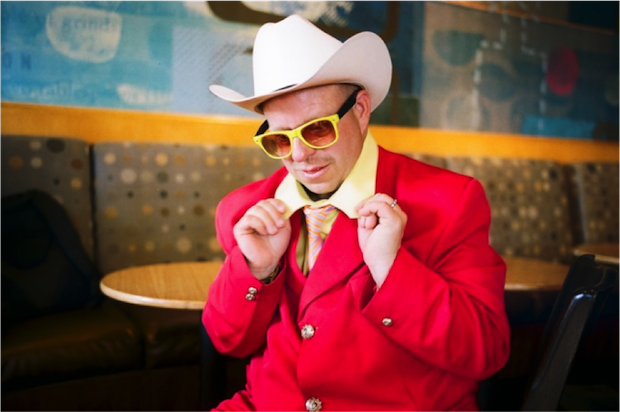
In regards to my workshops, they are focused on building confidence and fundamental skills in street photography. I feel that I do this very well and I also offer a 100% money back guarantee for anyone who attends and who isn’t happy (nobody has asked for their money back yet). And lastly, it is a great opportunity to meet other passionate street photographers. At the end of the day, I see myself less of a teacher and more of a facilitator.
PP: I like that you made the distinction between teacher and facilitator. It often seems like there’s no correct way to approach street photography. Could this be why there’s a lot of debate over what a street photo should look like? Do you think there’s a right way to take a street photograph?
EK: I don’t think there is a right way to shoot street photography, as there is no right way to paint a painting or write a book. I do believe there are guidelines and fundamentals that certainly help in street photography. For example, I find it’s best to use your viewfinder when shooting in the streets — if you have one — instead of shooting from the hip. The downside of shooting from the hip is that you can never get your framing as accurately as your eye; you often get skewed verticals and if you get caught shooting from the hip, you might get more in trouble than just shooting openly and honestly.
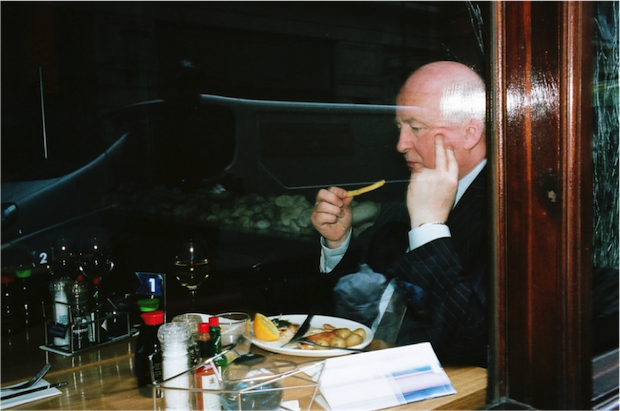
Another guideline: taking photos from the front is generally (not always) better than shooting from the back. Shooting a photo head on which show faces are generally more interesting, as you can see more emotions and expressions in the subjects you are photographing. Shooting people from behind often doesn’t feel as intimate and you can’t really get a sense of their expressions. Of course there are always exceptions.
There are a lot of street photographers who debate what street photography is and what street photography isn’t. I take a more liberal view, and I think that street photography is a more inclusive, than exclusive, genre. This means that there are lots of photos which I believe count as “street photography”. I liken street photography to rock music. If you ask a hundred rock music fans what they think rock music is, you will get a hundred different responses. Some people think hardcore heavy metal rock is “real” rock music while others believe that only classic rock music, like the Beatles, is real rock music.
I see lots of different approaches and sub genres in street photography now. For example, I often see: Street photography that is candid and more focused on geometry, lines, shapes, and composition — like Henri Cartier-Bresson. Street photography that is more documentary style — which are also candid shots of people living in certain situations or societies around the world — think Bruce Davidson.
Street photography that is more focused on portraiture, some people call it “street portraits”, which is generally what I gravitate to the most. I don’t think it necessarily has to be candid either — William Klein is a great example of someone who interacted with his subjects. Street photography that is more head on and aggressive — think of Garry Winogrand and his 28mm lens.
So these are just a few examples but to answer your answer: no, I don’t think there is one right way to shoot street photography. It all depends on your personality and what you want to achieve with your work.
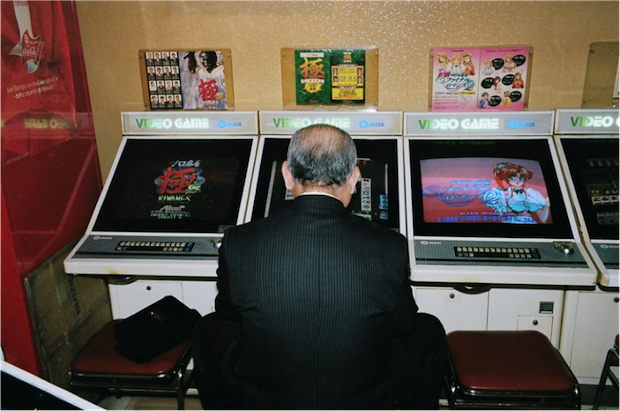
PP: I totally agree with you. I think street photography seems so flexible in terms of aesthetic; you could be Saul Leiter, Daido Moriyama or Bruce Gilden — how do you think you find your personal style, aesthetic or approach? I think catharsis of the personality has a lot to do with it.
EK: Yeah I agree with you. I think finding your style in street photography is a combination of establishing your visual aesthetic: camera, focal length; film or digital, color or black and white; compositions, as well as your own personality. What subjects interest you, how the photos you take are a self-reflection of you, and how you approach people in the streets.
I think one of the most important things about a street photographer is to really understand his or her personality and how their photography reflects that. I don’t think you should try to fit your personality to a style. Rather your style should derive from your personality. For example, not everyone can shoot like Bruce Gilden or William Klein without having the personality for it. Even though they get a lot of flak for being aggressive and “in your face” they are true to their personality. As Gilden says himself when giving advice to photographers: “Shoot who you are.”
But then again, not everyone has the patience to shoot like Henri Cartier-Bresson, seeing the scene and waiting for “the decisive moment” to appear. When I started street photography, I tried to imitate his style, but found that wasn’t true to my personality. I don’t really like always being candid and unnoticed when shooting in the streets. I like to interact with people, talk to them, get to know their names and what they do and occasionally I pose them for fun. At the end of the day I just love interacting with people. To make an interesting photo personally comes second for me.
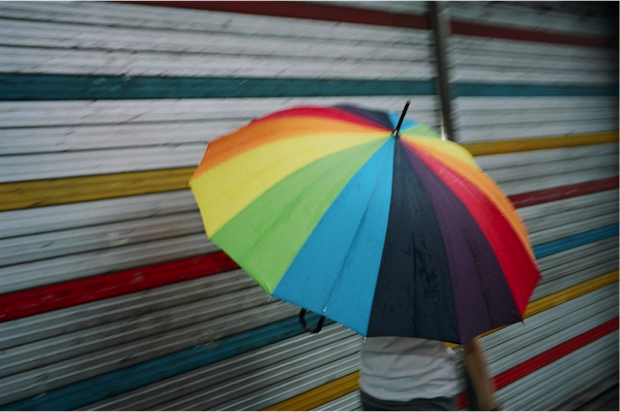
PP: Like anything, street photography has its fashions and trends. What do you think makes the difference between short-lived success and longevity as a photographer — especially with the advent of social media?
EK: That is a great question. I don’t quite know the answer to that question yet, as I have only been teaching and blogging street photography full-time for two or so years. But, I have some ideas borrowed from philosophy that can answer your question. I think the secret to longevity as a photographer, or any other profession, is simply not to die. Meaning: to always be photographing, working on projects, and being active. There is a nice saying by Roman philosopher and former slave, Publius Syrus, who said over 2000 years ago: “The rolling stone gathers no moss.” The way I interpret this statement, especially in today’s modern world with social media; is never stop moving, producing, and creating.
I read a humbling statistic that 99% of blogs don’t get updated after the first month. I know many great bloggers who were once popular, but fell into obscurity because they simply stopped posting articles, photos, or any of their creations. Therefore the best social media advice I can give when it comes to blogging, Facebook, Twitter, Flickr, YouTube, etc. is to never stop the hustle.
That doesn’t mean that you have to be posting 100 times day, but be consistent. It is about having expectations with your audience and not falling off the map. So for example, I post articles, interviews, or videos to my blog at least once every two days. I post to Twitter and Facebook daily — I generally schedule them about a month in advance for consistency sake. I don’t post photos on Flickr or social media often, but I still post at least once or twice a month, to show people I am still alive and taking photos.
But one thing I am starting to realize about social media is that it really isn’t as important as people think it is in the grand scheme of things. Once you are dead will it matter that you had a million followers on Facebook or Twitter? Who knows if Flickr and Google+ will still be around a hundred years from now? Our websites and blogs certainly won’t be around then.
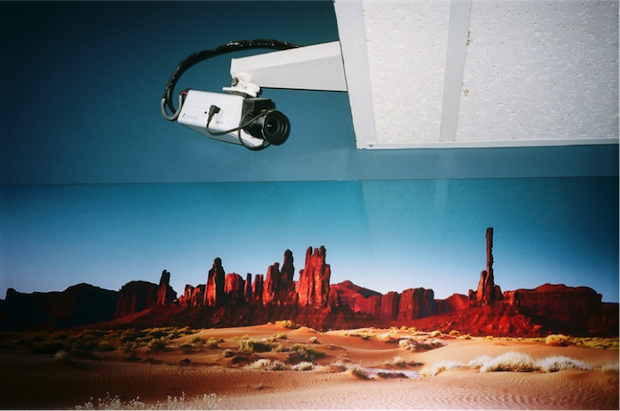
But what does last and give you ultimate longevity as a photographer after your death? I think it is the photo book. I believe photo books are the ultimate expression of a photographer and will still be accessible a hundred years from now. I don’t know if our RAW files will be accessible a century from now, but I know people will still be able to see my film — a reason I prefer to shoot with 35mm film.
So at the end of the day I feel that having a following on social media doesn’t really matter. I think photographers, myself included, should focus less on the number of followers we have and more on working on long-term photography projects and books that will survive after we die. Social media can often distract us from that and make us focus on single images that give us a lot of “favorites” and “likes.”
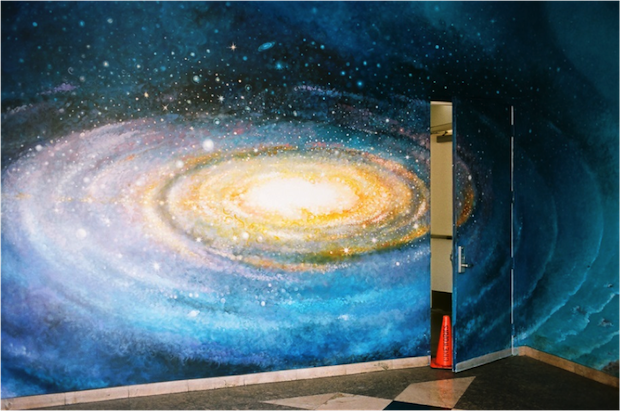
PP: Like you said, it’s important not to ‘die’ as a photographer or an artist and I know you’re doing a lot. What are you up to currently?
EK: I’m currently a bit burnt out from traveling, so I am actually trying to spend more time at home. Traveling internationally is amazing as I have met some incredible people and had valuable life experiences. But too much traveling is exhausting physically, mentally and spiritually. And at the end of the day, home is where the heart is. Therefore, I’m trying to focus more on doing workshops in the states. I have workshops coming up in San Francisco and Los Angeles in the next two months.
As for my international workshops I am trying to correspond them to my girlfriend, Cindy’s, schedule. For example, she is presenting at a Digital Humanities conference in Umea, Sweden in December and I am going with her. So I just added workshops to Stockholm and London, as they are close in the region.
Now that I have more time at home, I am working on the “open source photography” approach of creating more photography educational tools and resources available for free — to be changed, remixed, and used. For example, I taught an online street photography workshop for UC Riverside over a year ago and now I have edited the content for anyone to access. You can download the syllabus for free. I also hope to produce more educational videos for YouTube regarding street photography in the near future.
![]()
PP: And what about your personal photography; are there projects you’re working on in particular?
EK: The main project I am currently working on is called “Suits” — a project based on my experiences and feelings working in the corporate world.
To give some background about the project, I studied Sociology for my undergraduate at UCLA and in terms of my beliefs; I was quite liberal and left-leaning. I always told myself that I would never “sell out to the man” and wanted to follow my passions in life — which was teaching. I loved Sociology and was quite keen on getting my Ph.D. and becoming a Sociology professor. However, towards the end of my senior year; I didn’t know if I wanted to go to school for another 8 years and opted instead to work a corporate job.
The corporate job I had was fun– I learned a lot and met some great people along the way. However, as time went on, I found myself becoming more materialistic and wanting more. I saw all of my friends buying new BMW’s and I started lusting for them. My friends would always have the latest gadgets, cameras and more and I started to fiend for more materialistic things. I wanted to make more money, so I started working later, sending emails on weekends — all for that raise and/or promotion.
After about a year of working there, my company went public and IPO’d. We all thought we would become rich, but like all the tech stocks, our value started to plummet. One day I get called in and got laid off — as did my boss and about a half of the company. Of course when I got laid off my job, I was quite afraid. I had student loans to pay off, credit card debt and little money in my savings. But in hindsight; getting laid off was the best thing that happened to me. It gave me the opportunity to pursue my street photography and blog full-time — I make a living teaching street photography workshops. I especially give thanks to my girlfriend Cindy and my Mom for giving me all this great support.
So now that I am off the corporate grind/rat-race; I see people and friends working corporate jobs who are absolutely miserable. They work day in and day out just to save enough to buy that new BMW, move into a bigger house, or to keep feeding their obsession for buying more materialistic things. I have been there, I feel their pain, and I can relate.
![]() This project is mostly a self-portrait of myself. Not all people who work corporate jobs are miserable. I know tons of people who love their jobs and wearing suits. But my experiences were subjectively pretty miserable and I want to put together a series in which other individuals can relate to.
This project is mostly a self-portrait of myself. Not all people who work corporate jobs are miserable. I know tons of people who love their jobs and wearing suits. But my experiences were subjectively pretty miserable and I want to put together a series in which other individuals can relate to.
Another project I am currently working on is tentatively called “Colors”, which I might call “still-life street photography.” Most of the shots are quite colorful, and most of them don’t even include people.
PP: There’s a lot of research on your blog about photographers, but which photographers most inspire you to shoot? And are there any less street-orientated influences?
EK: Currently my biggest inspiration in photography is Martin Parr. The reason I love his work is that not only are his images colorful, whimsical, and powerful– but they also have strong social commentary. Having studied Sociology; I don’t want my photos to just be pretty images. I want my images to impact and influence people in a deeper sociological way. For example, his project: “Small World” explores globalization and tourism all around the world and I see a great deal of cynicism and negativity from Parr’s perspective. I feel quite similarly myself.
A lot of Parr’s work also revolves around capitalism, materialism, and cultural values and are quite shocking and impactful to his viewers. Parr also gets a ton of criticism for his work, but he rarely defends himself. He has a great self-deprecating sense of humour and focuses his energies on photographing, collecting, curating and book-making — rather than listening to his critics. I get criticized quite heavily as well and have learned from Parr by example. Parr also doesn’t consider himself a “street photographer” but rather a documentary photographer. Although, his candid approach of shooting on the streets is pretty much how most street photographers I know shoot.
Besides Parr, I am also quite heavily influenced by William Eggleston who you might call a more “fine art” photographer. I love the colors in his work and how he is able to capture mundane scenes and objects and make them seem extraordinary. He taught me that you can take a photograph of anything and still make it interesting.
Strangely enough my biggest inspirations outside of photography are from rap music. I am a huge fan of Jay-Z and Kanye West for their hard work ethic, willingness to push boundaries and innovate. Whenever I need a motivational speech when it comes to blogging, my photography, or world-view — I often listen to interviews with Jay-Z and Kanye West about how hard they work, how true they stay to themselves and disregard what others say about them.
Lastly in terms of inspirations from philosophy, I am a huge fan of Nassim Taleb; one of the greatest living philosophers in my opinion. I have read each of his books at least 5 times. My favorite of his being “Antifragile”: a manual on how to live happily in a world filled with uncertainty. I am also a big fan of the pragmatic philosophical advice from the school of Stoicism: Seneca, Marcus Aurelius and Epictetus being my favorite philosophers.
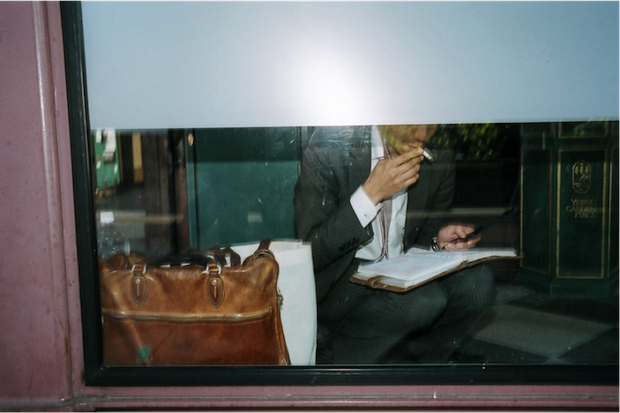
PP: On your blog you feature a lot of ‘new’ street photographers. It’s actually where I keep up to date with the up-and-comers. Whose work are you currently into and what do you think sets them apart from the others?
EK: There are a lot of talented street photographers out there currently and I certainly try my best to share the work of those who aren’t as well-known. But I think I can do a better job profiling more than I currently do.
Whenever I look for talent to feature on my blog, I generally look through their Flickr streams. I like photographers who have a consistency of visual imagery — being consistent in color or black and white, general subject matter and style. It drives me nuts when I see street photographers who have too much variation on their Flickr streams; mixing too much black and white and color, including random landscape shots and going too heavy in the post processing — looking too HDR.
I follow the street photography collectives such as Burn My Eye, In-Public, Strange.rs, That’s Life, Stroma, and Observe for inspiration. In terms of my favorite contemporary street photographers — they currently include the following (in no particular order):
Junku Nishimura is a Japanese street photographer whose nostalgic black and white film work brings me back to the past. Sean Lotman from Kyoto has incredible color street photography from all around the globe and combines his photos with haikus which is awesome. Charlie Kirk also has some of the most stunning work done in Tokyo I have seen and is also working on a book on Istanbul which has powerful images. Charalampos Kydonakis, “Dirty Harrry,” is one of the most innovative street photographers out there and I love his surreal images.
I enjoy the work of Dana Barsuhn, a black and white film photographer in LA whose images are soulful and have a timeless feel. Satoki Nagata, a Japanese photographer who lives in Chicago creates beautiful images that border fine art, documentary and street photography. Rinzi Ruiz from LA is a prolific shooter as well and he has created a very signature style, which focuses on light and shadows. Lastly, I would like to mention Josh White, a Canadian street photographer who is doing some great gritty work in the depths of Seoul, Korea.
PP: I think this is a good place to finish. But I want to end by hopefully opening up a discussion among street photographers. I’ve been thinking a lot recently about how there seems to be a fair amount of inner conflict within the ‘street photographer’ grouping. I think street photography suffers from a lack of definition and that might be why people are battling about what the genre is and isn’t. To, hopefully, start it off, what do you think street photography is?
![]() EK: I don’t like definitions too much and I agree with you, there is certainly a lot of conflict over “what street photography is” and “what street photography isn’t”. Honestly it is one of the debates I dislike the most and try to avoid. However at the end of the day, I personally define street photography to myself as: “Proof of humanity.”
EK: I don’t like definitions too much and I agree with you, there is certainly a lot of conflict over “what street photography is” and “what street photography isn’t”. Honestly it is one of the debates I dislike the most and try to avoid. However at the end of the day, I personally define street photography to myself as: “Proof of humanity.”
I don’t think street photography has to necessarily include people in it, has to be candid, or contain some “decisive moment.” For me the most memorable street photographs are always the ones that hit you in the gut, evoke some emotion, and burn themselves into your mind. They are photos that challenge you to re-think what it means to be human, that challenge you to see society differently and to connect. I recently wrote a rather in-depth and lengthy article on what I think street photography is.
PP: I think “proof of humanity” is a great way to conceptualize it. Lastly, do you have any advice for the street photographer community?
EK: For anyone reading this interview out there and are starting off in street photography, or are interested in it, here is some advice I would have given myself if I started all over again:
Buy experiences, not gear. I think one of the worst diseases of the modern world is advertising and materialism. They permeate every part of society — especially when it comes to photography. We are constantly bombarded by new cameras, lenses, reviews and advertisements that urge us to keep buying newer and better equipment.
I personally have spent a ton of money in having “GAS” (Gear Acquisition Syndrome). It is quite funny, I think the happiest moments I had was when I started photography and had nothing but a little Canon point-and-shoot. Then I upgraded to the Rebel XT, read on online forums that “real photographers” used full frame. I upgraded to the Canon 5D, and read that I “couldn’t use” non-L lenses on a full-frame and bought a plethora of L lenses. Then of course when I got into street photography, I read that the “masters” all used Leica’s and I lusted after a Leica M9 for quite a long time. I always thought when I got the M9, I would be happy for the rest of my life. But once I got the M9 the madness didn’t stop. There were more expensive lenses to buy, more exotic accessories to buy — there was no end to the madness.
One of the biggest regrets I have in my photography is spending those countless amount of hours comparing lens sharpness tests of brick walls, on gear and rumor forums and all that money on equipment I never really needed. Rather, I wish I spent all that money, time and effort buying experiences — not material things. I wish I spent the money to travel more, to attend more workshops and on purchasing photo books — a material possession that is more of an experience.
I read a lot of psychological studies which prove this as well; that buying experiences brings a lot more happiness than material possessions. This is because, with material possessions like new cameras, they easily get out-dated and we generally get rid of them after a while. However the experiences we have; they stay with us forever. (For more information, read the study: “If money doesn’t make you happy, then you probably aren’t spending it right“)
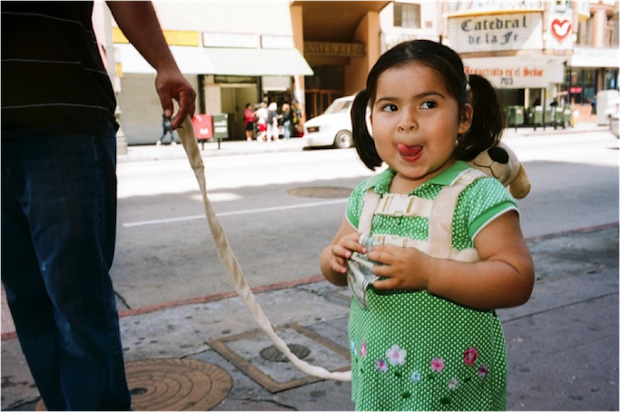
Don’t compete, collaborate. When I started off in photography I always told myself: “Once I get a 100 favorites on Flickr I will be happy for the rest of my life and could retire in photography. The opposite happened. The day I hit 100 favorites on one photo; that expectation jumped up to 200 favorites; then 300 favorites; then 400; then 500. Still I am not satisfied.
I think with social media, it is easy for us photographers to compete with one another with numbers. We compare ourselves to one another with the number of followers we have, the number of likes and favorites and our social media popularity ranks. But, it ends up being destructive as we no longer shoot for ourselves, but to please others. To sum up this idea; Publius Syrus brilliantly said: “To depend on another’s nod for a livelihood, is a sad destiny.”
So rather than competing with one another, I think we as photographers should spend more effort collaborating with one another. We should spend more time shooting with one another, critiquing each other’s’ work, meeting up for lunch and coffee, sharing photography books, creating group exhibitions and even becoming a part of a collective. We should see each other as teammates and work together. The sum of the whole is always greater than its parts.
Less is more. I think the “less is more” philosophy applies to many things within street photography. First of all, I think that most photographers tend to share too much of their work. I think we should all strive to share less of our work. By sharing only our best work, we look like much better photographers. We are only as good as our weakest image. As a guideline, I generally try not to post more than 1 image a week. I have tons of photos that are “maybe” photos; that I know aren’t great but I want to like them. But at the end of the day, I have to remember to “kill my babies.”
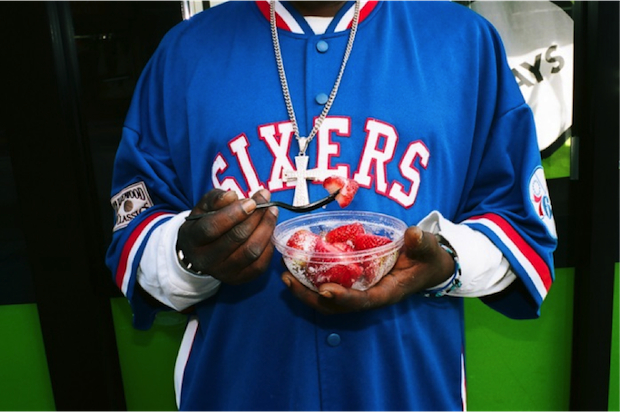
Secondly, when it comes to cameras and gear, less is certainly more. I currently own only one lens: a 35mm. It is the focal length I have been using the last 5-6 years, both on my Canon 5D and now my film Leica. Now I know my focal length inside and out, whereas when I had a lot of lenses, I never got to truly master one focal length. I used to own a lot of cameras as well, but after giving away most of them to friends and family I feel less burdened and much happier to just apply the “one camera, one lens” philosophy to my life and photography.
Lastly, I think when it comes to having contacts to give you feedback and support, less is more as well. Rather than having 100 contacts you try to keep updated with, try to keep close eyes on maybe 3 or 5 photographers. Give them in-depth feedback and critique and build close connections with them. Also when it comes to social media, it isn’t the number of followers you have that matters, but the quality of followers that you have that matter.
To conclude, I would like to thank everyone in the street photography community for their continued love and support. If it weren’t for pure luck and the encouragement of others, I couldn’t be where I am now.
PP: Thanks for everything Eric. It’s been great getting to know more about you, your work and your views on the world and street photography. We wish you luck with your workshops, projects and anything else you might get up to.
There are always people who get riled about others successes and who are suspicious of people making money doing what they love. But, you can’t find the idiotic con man in Eric that his dissenters want him to be. He’s a big name in street photography circles, and justifiably so. There are only a few others who are so selfless in helping the medium grow. So while you might not always agree with what he says, you can’t knock what he does.
You can see Eric’s work on his website or Flickr, as well as find workshops, advice, lessons and interviews on his blog. Or, follow him on Twitter, Facebook or YouTube for more work, updates and information.